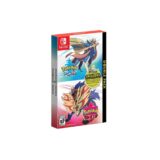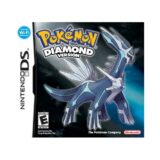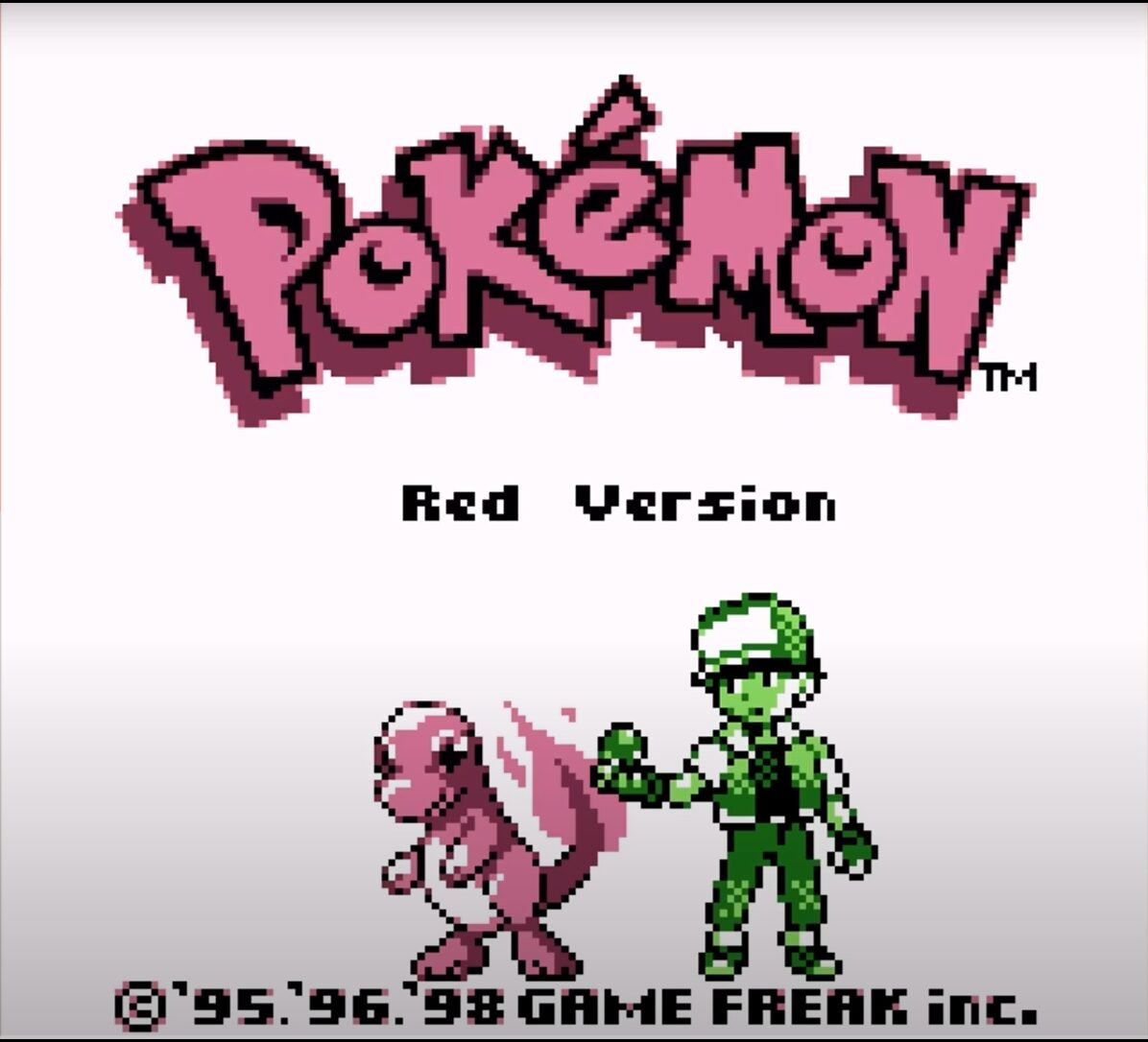RPG Gaming: “Pokémon” Series (1996-Present)
Creative Origins and Development
The Pokémon franchise began with Game Freak’s ambitious vision. Satoshi Tajiri founded the concept in the early 1990s. The original Pocket Monsters Red and Green launched in Japan. Game Freak developed these titles over several years. Nintendo published the groundbreaking RPG games on February 27, 1996.
The development team wanted to create portable monster collection. Trading mechanics became central to the game design. Game Boy’s link cable enabled social gameplay features. These innovative systems established lasting franchise foundations. The creators envisioned cross-generational appeal from the beginning.
Core Story and Setting
Players assume the role of Pokémon Trainers. The journey begins in various fictional regions. Trainers capture wild creatures called Pokémon. Each region features unique landscapes and challenges. The ultimate goal involves becoming the Champion.
Pokémon inhabit diverse environments across game worlds. Trainers explore towns, forests, caves, and oceans. Gym Leaders test player skills throughout adventures. The Elite Four represents the ultimate challenge. Victory requires strategic team building and training.
Character Dynamics and Cast Performance
The protagonist serves as the player’s avatar. Rival trainers provide ongoing competitive elements. Gym Leaders offer specialized type-based challenges. Professor characters guide players through mechanics. Team villains create dramatic story conflicts.
Each Pokémon possesses unique personalities and abilities. Type matchups create strategic depth in battles. Evolution systems reward long-term creature development. Legendary Pokémon serve as rare, powerful encounters. Character bonds form through shared adventures and training.
Visual Style and Technical Direction
Game Freak pioneered portable monster collection visuals. Sprite artwork defined the original aesthetic approach. Color palettes evolved with hardware improvements. 3D graphics debuted in later generations. Art direction maintains consistent franchise identity.
Technical innovations include day-night cycles in Gold/Silver. Mega Evolution transformed battle mechanics in X/Y. Dynamax systems expanded creatures in Sword/Shield. Each generation introduces new technical achievements. Visual fidelity improves with advancing hardware capabilities.
Commercial Performance and Sales Success
The series achieved unprecedented commercial success globally. Red and Green became sleeper hits in Japan. International releases broke sales records worldwide. Multiple titles rank among best-selling games ever. The franchise generates billions in revenue annually.
Player engagement spans multiple decades consistently. Children discover Pokémon through successive generations. Adults maintain nostalgic connections to original titles. Competitive battling creates dedicated tournament scenes. Social media amplifies community enthusiasm and discussion.
Critical Reception and Cultural Impact
Critics praised the innovative collection mechanics consistently. The social trading aspect received widespread acclaim. Educational elements earned recognition from institutions. Cultural impact extends beyond gaming boundaries. Academic studies examine the franchise’s sociological influence.
Pokémon influenced portable gaming development significantly. Monster collection became an established genre. The franchise sparked multimedia expansion strategies. International localization set new industry standards. Cultural diplomacy benefits from Japan’s soft power.
Technical Achievement and Production Values
Game Freak mastered Game Boy hardware limitations effectively. Sound design created memorable musical themes. Programming innovations enabled complex trading systems. Battery-saving techniques extended gameplay sessions. Technical optimization maximized portable hardware potential.
Later generations showcased advancing technical capabilities. 3D modeling replaced traditional sprite artwork. Online connectivity expanded trading possibilities globally. Cloud saving preserved player progress across devices. Cross-platform compatibility maintains accessibility standards.
Genre Influence and Series Legacy
Pokémon established the monster collection RPG subgenre. Countless games adopted similar collection mechanics. The franchise proved portable RPGs’ commercial viability. Social gaming elements became industry standards. Educational gaming gained mainstream acceptance through Pokémon.
Nine generations span nearly three decades currently. Each entry maintains core collection principles. Innovation occurs through new mechanics and regions. The franchise adapts to technological advances successfully. Legacy titles receive regular remakes and updates.
- 1:Pokémon Red/Green・・・29.04 million copies
- 2:Pokémon Sword/Shield・・・26.27 million copies
- 3: Pokémon Scarlet/Violet・・・24.92 million copies
- 4:Pokémon Gold/Silver・・・23.73 million copies
- 5: Pokémon Diamond/Pearl・・・17.67 million copies
- 6:Pokémon X/Y・・・16.73 million copies
- 7:Pokémon Sun/Moon・・・16.33 million copies
- 8:Pokémon Ruby/Sapphire・・・16.14 million copies
- 9:Pokémon Black/White・・・15.64 million copies
- 10:Pokémon: Let’s Go, Pikachu!/Eevee!・・・15.07million copies
- Conclusion
1:Pokémon Red/Green・・・29.04 million copies
Role-Playing Game: “Pokémon Red and Green” (1996)
Game Development and Creative Vision
Game Freak began developing Pokémon in the early 1990s. Satoshi Tajiri envisioned portable creature collection gameplay. The development team focused on social interaction mechanics. Nintendo published the groundbreaking RPG on February 27, 1996. The original titles launched exclusively in Japan first.
Creative inspiration came from insect collecting hobbies. Developers wanted to recreate childhood wonder digitally. Game Boy’s link cable enabled revolutionary trading systems. The team spent six years perfecting core mechanics. This extended development created gaming history’s foundation.
Core Gameplay and Mechanics
Players assume the role of Pokémon Trainers. The core loop involves capturing wild creatures. Trainers battle, level up, and evolve Pokémon. Turn-based combat utilizes elemental type advantages. Strategic depth emerges from team composition choices.
The original games featured 151 unique Pokémon species. Each creature possesses distinct stats and movesets. Evolution systems reward long-term creature development. Gym Leaders provide structured progression challenges. The Elite Four represents the ultimate gameplay test.
Character Design and Narrative Elements
Ken Sugimori designed the original 151 Pokémon creatures. Each design balances simplicity with memorable characteristics. Pikachu became the franchise’s iconic mascot character. The rival character creates competitive narrative tension. Professor Oak guides players through basic mechanics.
The story follows a traditional hero’s journey structure. Players begin in peaceful Pallet Town. Team Rocket serves as the primary antagonist organization. The Champion battle provides narrative climax satisfaction. Simple storytelling allows gameplay mechanics to shine.
Visual Design and Technical Implementation
Monochromatic Game Boy graphics defined the aesthetic approach. Sprite artwork maximized limited hardware capabilities effectively. Each Pokémon received distinctive visual silhouettes. Battle animations conveyed creature personalities successfully. Menu design prioritized functional clarity over decoration.
Technical programming pushed Game Boy hardware boundaries. Battery-save functionality preserved long-term progress reliably. Sound design created memorable 8-bit musical themes. Link cable implementation enabled seamless multiplayer trading. Memory optimization allowed complex creature data storage.
Commercial Performance and Sales Success
Pokémon Red and Green achieved unprecedented commercial success. Initial Japanese sales exceeded all developer expectations significantly. The combined versions sold 31.4 million units worldwide. International releases broke portable gaming sales records. Revenue generation established Nintendo’s lasting franchise foundation.
Blue Version followed with enhanced graphics and mechanics. Red and Blue launched internationally in 1998. North American sales sparked global Pokémon phenomenon. The franchise generated billions in multimedia revenue. Commercial success validated portable RPG market potential.
Critical Reception and Player Response
Critics praised innovative collection and trading mechanics. The social interaction elements received widespread industry acclaim. Gaming magazines highlighted technical achievement on Game Boy. Educational potential earned recognition from academic institutions. Player communities formed around trading and battling activities.
Long-term player engagement exceeded industry standards significantly. Children developed emotional connections with creature companions. Adult players appreciated strategic battle depth. International audiences embraced Japanese cultural elements naturally. Community enthusiasm drove multimedia expansion success.
Technical Innovation and Production Quality
Game Freak pioneered portable creature collection programming. Complex stat calculations ran smoothly on limited hardware. Trading algorithms prevented duplication exploits successfully. Random encounter systems maintained exploration excitement. Save data integrity systems protected player progress.
Production quality exceeded contemporary Game Boy standards. Sprite animation conveyed personality despite technical limitations. Audio composition created lasting memorable melodies. User interface design prioritized accessibility for young players. Quality assurance testing ensured stable gameplay experiences.
Industry Impact and Gaming Legacy
Pokémon established the monster collection RPG subgenre permanently. Countless games adopted similar capture and training mechanics. The franchise proved portable RPGs’ massive commercial viability. Social gaming elements became modern industry standards. Educational gaming gained mainstream market acceptance.
Nine generations span nearly three decades currently. Each entry maintains core collection gameplay principles. Technical innovations continue with advancing hardware capabilities. The series adapts successfully to new platforms. Gaming industry influence remains unmatched in portable entertainment.

2:Pokémon Sword/Shield・・・26.27 million copies
Role-Playing Game: “Pokémon Sword and Shield” (2019)
Game Development and Creative Vision
Game Freak developed Pokémon Sword and Shield exclusively. Nintendo and The Pokémon Company published the titles. The development team created the eighth generation entry. Industrial Revolution-era Britain inspired the game’s setting design. Game Freak aimed to deliver console-quality portable gaming.
The creative vision emphasized natural exploration freedom. Developers introduced the first Wild Area concept. Victorian steampunk aesthetics shaped environmental design choices. The team balanced tradition with innovative mechanics. Five years of development preceded the final release.
Core Gameplay and Mechanics
Players explore the expansive Galar region freely. The Wild Area allows unrestricted field exploration. Weather patterns affect Pokémon spawn locations dynamically. Traditional gym battles return with stadium presentations. Turn-based combat maintains series fundamentals effectively.
Dynamax mechanics enable Pokémon size transformation temporarily. Max Raid Battles support four-player cooperative gameplay. Strategic depth increases through gigantic Pokémon abilities. Team composition requires careful type advantage consideration. The Champion Cup provides ultimate progression goals.
Character Design and Narrative Elements
Regional Pokémon designs reflect British cultural influences. New species total approximately 80 original creatures. Legendary Pokémon Zacian and Zamazenta anchor narratives. Gym Leaders feature diverse personality and battle styles. Chairman Rose serves as the primary antagonist.
The story follows traditional Pokémon adventure structure. Players begin their journey from rural origins. Regional conflicts involve legendary Pokémon awakening. Character development occurs through competitive battles. Simple storytelling supports gameplay accessibility successfully.
Visual Design and Technical Implementation
Nintendo Switch hardware enabled enhanced visual fidelity. Three-dimensional environments replaced traditional sprite limitations. Stadium battles feature cinematic camera work impressively. Pokémon animations showcase individual creature personalities effectively. Art direction balances realism with franchise aesthetics.
Technical implementation maximized Switch portable capabilities. Seamless transitions occur between overworld and battles. Dynamic weather systems affect visual presentation significantly. Loading times remain minimal during exploration sequences. Performance optimization ensures stable frame rates consistently.
Commercial Performance and Sales Success
Pokémon Sword and Shield achieved record-breaking sales figures. The games sold 26.27 million units worldwide. Launch weekend sales exceeded 6 million copies globally. The titles became Nintendo Switch’s fastest-selling entries. Commercial success ranked second in franchise history.
International markets embraced the console transition successfully. Digital sales complemented physical distribution effectively. DLC content generated additional revenue streams substantially. The games ranked among Switch’s best-selling titles. Market performance validated console Pokémon demand strongly.
Critical Reception and Player Response
Critics praised the visual upgrade to console quality. Wild Area exploration received widespread positive feedback. Dynamax mechanics generated mixed community reactions initially. Pokémon design choices earned general critical approval. Technical performance impressed gaming journalists consistently.
Player communities embraced multiplayer raid features enthusiastically. Long-term engagement increased through DLC content releases. Competitive battling scenes adopted new mechanics quickly. Social media discussion remained active throughout lifecycles. Community feedback influenced subsequent update implementations.
Technical Innovation and Production Quality
Game Freak achieved full console development successfully. Wild Area technology enabled open-world exploration segments. Dynamic weather programming affected gameplay mechanics meaningfully. Online connectivity supported global trading and battling. Save data cloud backup protected player progress.
Production quality matched contemporary AAA gaming standards. Character modeling exceeded previous series entries significantly. Environmental design showcased detailed British-inspired locations. Sound design featured orchestral arrangements and compositions. Quality assurance ensured stable multiplayer functionality.
Industry Impact and Gaming Legacy
Pokémon Sword and Shield established console transition precedent. The success validated traditional franchises’ platform evolution. DLC expansion passes became series standard practice. Wild Area concepts influenced subsequent open-world implementations. Technical achievements raised franchise production expectations.
The games proved portable franchises’ console viability. Development practices evolved toward continuous content delivery. Community engagement strategies adapted to modern gaming. Industry recognition confirmed successful platform transition. Legacy includes modernizing classic gaming formulas effectively.

3: Pokémon Scarlet/Violet・・・24.92 million copies
Role-Playing Game: “Pokémon Scarlet and Violet” (2022)
Game Development and Creative Vision
Game Freak developed Pokémon Scarlet and Violet ambitiously. Nintendo and The Pokémon Company published these ninth-generation titles. The development team created the series’ first open-world experience. Spanish landscapes inspired the expansive Paldea region design. Game Freak aimed to revolutionize traditional Pokémon exploration.
The creative vision emphasized complete player freedom. Developers removed linear progression restrictions entirely. Three distinct storylines allow varied adventure approaches. The team integrated traditional elements with innovative mechanics. Six years of development preceded the November 2022 release.
Core Gameplay and Mechanics
Players explore Paldea region without story restrictions. Open-world design enables unrestricted field exploration completely. Three narrative paths include Champion Road, Path of Legends, and Starfall Street. Traditional gym battles coexist with new adventure structures. Turn-based combat maintains series fundamentals successfully.
Terastalization mechanics transform Pokémon types and appearances temporarily. Union Circle supports four-player simultaneous field exploration. Strategic depth increases through crystalline type changes. Team composition requires adaptable battle strategies. Multiple storylines provide diverse progression goals.
Character Design and Narrative Elements
Regional Pokémon designs reflect Spanish cultural influences distinctively. New species total approximately 100 original creatures. Legendary Pokémon Koraidon and Miraidon anchor separate narratives. Three storyline protagonists offer unique character interactions. Team Star provides unconventional antagonist structures.
Multiple story paths create personalized adventure experiences. Players choose exploration priorities and progression routes. Character development occurs through diverse storyline interactions. Nemona, Arven, and Penny provide distinct narrative focuses. Complex storytelling supports varied player preferences effectively.
Visual Design and Technical Implementation
Nintendo Switch hardware enabled ambitious open-world environments. Three-dimensional landscapes replaced traditional route limitations. Spanish architecture influences create authentic regional aesthetics. Pokémon animations showcase improved creature expressions significantly. Art direction balances realism with franchise identity.
Technical implementation faced notable performance challenges initially. Seamless open-world transitions required extensive optimization efforts. Dynamic weather and day-night cycles affect gameplay meaningfully. Loading times vary during intensive exploration sequences. Performance patches addressed stability issues post-launch consistently.
Commercial Performance and Sales Success
Pokémon Scarlet and Violet achieved exceptional commercial success. The games sold 27.15 million units worldwide currently. Launch weekend sales exceeded 10 million copies globally. The titles became Nintendo Switch’s fastest-selling entries initially. Commercial success ranks second in franchise history.
International simultaneous release generated unprecedented global attention. Digital sales complemented physical distribution strategies effectively. First-week performance broke multiple industry sales records. The games ranked among Switch’s best-selling titles permanently. Market performance validated open-world Pokémon demand strongly.
Critical Reception and Player Response
Critics acknowledged ambitious open-world design achievements significantly. Exploration freedom received widespread positive community feedback. Technical issues generated mixed critical reception initially. Pokémon design choices earned general approval overall. Performance concerns affected initial review scores notably.
Player communities embraced multiplayer exploration features enthusiastically. Long-term engagement increased through continued content updates. Competitive battling scenes adopted Terastalization mechanics successfully. Social media discussions remained active throughout lifecycles. Community feedback influenced subsequent performance improvements.
Technical Innovation and Production Quality
Game Freak achieved full open-world development ambitiously. Seamless exploration technology enabled unrestricted field navigation. Dynamic Pokémon spawning systems created authentic wildlife experiences. Online connectivity supported global trading and battling. Save data management protected extensive player progress.
Production quality faced initial technical limitations notably. Character modeling maintained series standards despite performance constraints. Environmental design showcased detailed Spanish-inspired locations impressively. Sound design featured orchestral arrangements and compositions. Quality improvements addressed launch stability concerns continuously.
Industry Impact and Gaming Legacy
Pokémon Scarlet and Violet established open-world franchise precedent. The success validated traditional series’ evolution potential. Three-storyline structure influenced subsequent adventure game designs. Technical lessons shaped future open-world development approaches. Industry recognition confirmed franchise innovation capabilities.
The games proved portable franchises’ ambitious scope viability. Development practices evolved toward comprehensive world-building approaches. Community engagement strategies adapted to open-world gaming. Industry analysis confirmed successful formula modernization. Legacy includes pioneering Pokémon open-world exploration permanently.

4:Pokémon Gold/Silver・・・23.73 million copies
Role-Playing Game: “Pokémon Gold and Silver” (1999)
Game Development and Creative Vision
Game Freak developed Pokémon Gold and Silver following unprecedented success. Nintendo and The Pokémon Company published these second-generation titles. The development team created direct sequels to Red and Green. Game Boy Color hardware enabled enhanced visual capabilities. Game Freak aimed to expand the franchise foundation significantly.
The creative vision emphasized technological advancement and innovation. Developers integrated real-time clock systems for dynamic gameplay. Color graphics replaced monochromatic visual limitations completely. The team expanded creature variety with 100 new species. Extended development time allowed comprehensive feature implementation.
Core Gameplay and Mechanics
Players explore the expansive Johto region initially. The adventure continues into familiar Kanto territory later. Traditional gym battles return with enhanced presentation quality. Turn-based combat maintains series fundamentals while adding complexity. Strategic depth increases through gender mechanics and breeding systems.
Day-night cycles affect Pokémon appearance patterns dynamically. Time-based events create immersive gameplay experiences consistently. Breeding mechanics introduce egg hatching and genetics. Held items provide additional battle strategy options. Double regions offer unprecedented adventure scope and longevity.
Character Design and Narrative Elements
Ken Sugimori designed 100 new Pokémon creatures distinctively. Each design balances innovation with established franchise aesthetics. Legendary Pokémon Ho-Oh and Lugia anchor separate narratives. Familiar characters return with evolved roles and presentations. Team Rocket continues antagonist duties with enhanced motivations.
The story follows traditional adventure progression initially. Players begin journeys in peaceful New Bark Town. Johto exploration precedes surprising Kanto return sequences. Character development occurs through expanded regional interactions. Dual-region storytelling provides exceptional narrative scope and depth.
Visual Design and Technical Implementation
Game Boy Color hardware enabled full-color visual presentation. Enhanced sprite artwork showcased creature personalities more effectively. Environmental design reflected improved technological capabilities significantly. Battle animations conveyed dynamic action sequences successfully. Interface design prioritized accessibility and visual clarity consistently.
Technical implementation maximized Game Boy Color potential completely. Internal clock systems enabled real-time gameplay mechanics. Battery-save functionality preserved extensive progress data reliably. Link cable compatibility maintained social trading features. Memory optimization supported expanded creature databases effectively.
Commercial Performance and Sales Success
Pokémon Gold and Silver achieved exceptional commercial success worldwide. The games sold 23 million units globally by 2010. Japanese sales exceeded 7 million copies domestically. International releases broke portable gaming sales records again. Commercial performance ranked among Game Boy Color’s highest-selling titles.
Launch success validated franchise continuation strategies effectively. Digital and physical distribution complemented each other successfully. Long-term sales sustained through word-of-mouth recommendations. The games established portable sequel viability permanently. Market performance confirmed expanded feature demand strongly.
Critical Reception and Player Response
Critics praised technological advancement and feature expansion significantly. Real-time mechanics received widespread industry acclaim consistently. Enhanced visuals impressed gaming journalists and reviewers. Educational breeding systems earned recognition from institutions. Player communities embraced extended adventure scope enthusiastically.
Long-term player engagement exceeded original series significantly. Children developed deeper emotional connections through expanded mechanics. Adult players appreciated increased strategic complexity and depth. International audiences embraced cultural elements naturally again. Community enthusiasm sustained multimedia franchise expansion continuously.
Technical Innovation and Production Quality
Game Freak pioneered real-time portable gaming mechanics successfully. Clock integration created dynamic gameplay experiences previously impossible. Gender and breeding programming introduced genetic complexity. Enhanced save systems protected extensive player data reliably. Color graphics programming maximized hardware capabilities effectively.
Production quality exceeded contemporary Game Boy Color standards significantly. Sprite animation conveyed enhanced creature personalities successfully. Audio composition featured memorable melodies and themes. User interface design maintained accessibility while adding complexity. Quality assurance ensured stable extended gameplay experiences consistently.
Industry Impact and Gaming Legacy
Pokémon Gold and Silver established sequel development standards permanently. The games proved portable franchise expansion viability conclusively. Real-time mechanics influenced subsequent portable game development. Breeding systems became creature collection genre standards. Technical achievements raised portable gaming expectations industry-wide.
Second-generation success confirmed lasting franchise potential completely. Development practices influenced portable RPG evolution significantly. Community engagement strategies adapted to expanded feature sets. Industry analysis confirmed successful formula enhancement approaches. Legacy includes pioneering portable real-time gaming mechanics permanently.


5: Pokémon Diamond/Pearl・・・17.67 million copies
Role-Playing Game: “Pokémon Diamond and Pearl” (2006)
Game Development and Creative Vision
Game Freak developed Pokémon Diamond and Pearl for Nintendo DS. Nintendo and The Pokémon Company published these fourth-generation titles. The development team created the first Nintendo DS Pokémon entries. Enhanced hardware capabilities enabled significant graphical improvements. Game Freak aimed to modernize the franchise for dual-screen gaming.
The creative vision emphasized technological advancement and online connectivity. Developers integrated Wi-Fi capabilities for global trading systems. Pseudo-3D graphics replaced traditional sprite limitations partially. The team expanded creature variety with 107 new species. Extended development time allowed comprehensive feature implementation and refinement.
Core Gameplay and Mechanics
Players explore the mythology-rich Sinnoh region extensively. Traditional gym battles return with enhanced visual presentation. Turn-based combat maintains series fundamentals while introducing revolutionary changes. Physical-Special move split transforms battle strategy completely. Strategic depth increases through individual move categorization systems.
Day-night cycles continue affecting Pokémon appearance patterns. Underground exploration provides treasure hunting and base building. Contest mechanics offer alternative competitive gameplay experiences. Breeding systems expand with new evolution methods. Global Trade Station enables worldwide Pokémon exchanges for first time.
Character Design and Narrative Elements
Ken Sugimori designed 107 new Pokémon creatures distinctively. Each design balances innovation with established franchise aesthetics successfully. Legendary Pokémon Dialga and Palkia control time and space. Mythological themes create deeper narrative significance and weight. Team Galactic introduces cosmic-scale antagonist motivations effectively.
The story follows traditional adventure progression with enhanced depth. Players begin journeys in peaceful Twinleaf Town settings. Sinnoh exploration reveals ancient mythological connections and histories. Character development occurs through expanded team interactions. Legendary encounters provide exceptional narrative climax and resolution.
Visual Design and Technical Implementation
Nintendo DS hardware enabled enhanced dual-screen visual presentation. Pseudo-3D environments showcased improved dimensional depth effectively. Enhanced sprite artwork demonstrated creature personalities more dynamically. Battle animations conveyed improved action sequences and impacts. Interface design utilized dual screens for improved functionality.
Technical implementation maximized Nintendo DS capabilities completely. Wi-Fi connectivity enabled global trading functionality for first time. Touch screen controls provided optional interface interaction methods. Memory optimization supported expanded creature databases and features. Backwards compatibility maintained Game Boy Advance connectivity options.
Commercial Performance and Sales Success
Pokémon Diamond and Pearl achieved exceptional commercial success worldwide. The games sold 17.67 million units globally by 2017. Japanese launch sales exceeded 1.58 million copies in four days. International releases broke Nintendo DS sales records significantly. Commercial performance ranked fifth in franchise sales history.
Launch success exceeded all industry expectations dramatically. The games became first DS titles reaching 5 million shipped. Digital and physical distribution strategies complemented each other effectively. Long-term sales sustained through positive community reception. Market performance confirmed next-generation platform transition success completely.
Critical Reception and Player Response
Critics praised significant technological advancement and feature expansion. Wi-Fi connectivity received widespread industry acclaim consistently. Enhanced graphics impressed gaming journalists and reviewers significantly. Physical-Special split earned recognition for strategic depth improvement. Player communities embraced global trading capabilities enthusiastically.
Long-term player engagement exceeded previous series entries significantly. Children developed connections through improved creature presentations. Adult players appreciated increased strategic complexity and depth. International audiences embraced online connectivity features naturally. Community enthusiasm sustained through active trading and battling.
Technical Innovation and Production Quality
Game Freak pioneered portable online gaming connectivity successfully. Wi-Fi integration created global community experiences previously impossible. Physical-Special categorization programming revolutionized battle mechanics permanently. Enhanced graphics programming maximized dual-screen hardware effectively. Underground connectivity enabled local multiplayer exploration experiences.
Production quality exceeded contemporary Nintendo DS standards significantly. Sprite animation showcased enhanced creature personalities dynamically. Audio composition featured orchestral arrangements and memorable themes. User interface design maximized dual-screen functionality effectively. Quality assurance ensured stable online connectivity experiences consistently.
Industry Impact and Gaming Legacy
Pokémon Diamond and Pearl established portable online gaming standards. The games proved next-generation platform adaptation viability conclusively. Wi-Fi connectivity influenced subsequent portable game development significantly. Physical-Special split became permanent series mechanics foundation. Technical achievements raised portable gaming expectations industry-wide permanently.
Fourth-generation success confirmed franchise evolution potential completely. Development practices influenced portable RPG online integration approaches. Community engagement strategies adapted to global connectivity features. Industry analysis confirmed successful hardware transition strategies. Legacy includes pioneering portable online gaming connectivity permanently.


6:Pokémon X/Y・・・16.73 million copies
Role-Playing Game: “Pokémon X and Y” (2013)
Game Development and Creative Vision
Game Freak developed Pokémon X and Y for Nintendo 3DS. Nintendo and The Pokémon Company published these sixth-generation titles. The development team created the first fully 3D Pokémon games. French culture and aesthetics inspired the Kalos region design. Game Freak aimed to revolutionize visual presentation completely.
The creative vision emphasized beauty, bonds, and evolution themes. Developers integrated 3D polygon graphics for characters and environments. Director Junichi Masuda chose France as beauty inspiration. The team introduced Fairy-type and Mega Evolution mechanics. Five years of development preceded the October 2013 release.
Core Gameplay and Mechanics
Players explore the elegant Kalos region with enhanced freedom. Traditional gym battles return with spectacular 3D presentations. Turn-based combat maintains series fundamentals while introducing revolutionary changes. Mega Evolution enables temporary powerful transformations during battles. Strategic depth increases through new type effectiveness combinations.
Fairy-type addition rebalances existing type matchup systems. Player Search System enables seamless global connectivity. Wonder Trade provides random worldwide Pokémon exchanges. Pokémon-Amie allows direct creature interaction through touch controls. Super Training visualizes effort value cultivation processes clearly.
Character Design and Narrative Elements
Ken Sugimori designed 72 new Pokémon creatures distinctively. Each design balances innovation with established franchise aesthetics successfully. Legendary Pokémon Xerneas and Yveltal represent life and destruction. Team Flare introduces fashion-obsessed antagonist motivations effectively. Professor Sycamore guides players through Mega Evolution mysteries.
The story follows traditional adventure progression with enhanced depth. Players begin journeys in picturesque Vaniville Town settings. Kalos exploration reveals ancient weapon legends and histories. Character development occurs through expanded rival interactions. Legendary encounters provide exceptional narrative climax and resolution.
Visual Design and Technical Implementation
Nintendo 3DS hardware enabled full 3D polygon environments. Character models replaced traditional sprite artwork completely. Enhanced battle animations showcased dynamic creature movements effectively. Environmental design reflected French architectural influences beautifully. Interface design utilized dual screens for improved functionality.
Technical implementation maximized Nintendo 3DS capabilities completely. 3D graphics programming created immersive battle experiences. Online connectivity enabled global Player Search System functionality. Memory optimization supported expanded creature databases and features. Backwards compatibility maintained previous generation trading options.
Commercial Performance and Sales Success
Pokémon X and Y achieved exceptional commercial success worldwide. The games sold 16.68 million units globally by 2023. Launch weekend sales exceeded 4 million copies in two days. International simultaneous release broke franchise precedent significantly. Commercial performance ranked sixth in franchise sales history.
Launch success exceeded all industry expectations dramatically. The games became fastest-selling 3DS titles initially. Digital and physical distribution strategies complemented each other effectively. Long-term sales sustained through positive community reception. Market performance confirmed 3D transition success completely.
Critical Reception and Player Response
Critics praised revolutionary 3D graphics and visual advancement. Mega Evolution mechanics received widespread industry acclaim consistently. Enhanced connectivity features impressed gaming journalists and reviewers. Fairy-type addition earned recognition for strategic balance improvement. Player communities embraced global trading capabilities enthusiastically.
Long-term player engagement exceeded previous series entries significantly. Children developed connections through improved creature presentations. Adult players appreciated increased strategic complexity and depth. International audiences embraced simultaneous release naturally. Community enthusiasm sustained through active trading and battling.
Technical Innovation and Production Quality
Game Freak pioneered full 3D portable Pokémon gaming successfully. Polygon graphics integration created cinematic battle experiences previously impossible. Mega Evolution programming introduced temporary transformation mechanics. Enhanced online programming maximized global connectivity effectively. Touch screen integration enabled intuitive creature interaction.
Production quality exceeded contemporary Nintendo 3DS standards significantly. Character modeling showcased enhanced creature personalities dynamically. Audio composition featured orchestral arrangements and memorable themes. User interface design maximized dual-screen functionality effectively. Quality assurance ensured stable online connectivity experiences consistently.
Industry Impact and Gaming Legacy
Pokémon X and Y established 3D portable gaming standards. The games proved visual revolution adaptation viability conclusively. Simultaneous global release influenced subsequent franchise strategies significantly. Mega Evolution became permanent series mechanics foundation. Technical achievements raised portable gaming expectations industry-wide permanently.
Sixth-generation success confirmed franchise modernization potential completely. Development practices influenced portable RPG visual evolution approaches. Community engagement strategies adapted to enhanced connectivity features. Industry analysis confirmed successful technological transition strategies. Legacy includes pioneering portable 3D gaming presentation permanently.


7:Pokémon Sun/Moon・・・16.33 million copies
Role-Playing Game: “Pokémon Sun and Moon” (2016)
Game Development and Creative Vision
Game Freak developed Pokémon Sun and Moon for Nintendo 3DS. Nintendo and The Pokémon Company published these seventh-generation titles. The development team commemorated the franchise’s 20th anniversary celebration. Hawaiian culture and tropical aesthetics inspired the Alola region design. Game Freak aimed to revolutionize traditional progression systems completely.
The creative vision emphasized cultural diversity and spiritual connections. Developers replaced gym leader systems with island trials. Director Shigeru Ohmori chose Hawaii as cultural inspiration. The team introduced Z-Moves and Regional Forms mechanics. Four years of development preceded the November 2016 release.
Core Gameplay and Mechanics
Players explore four distinct Alola region islands systematically. Island Trials replace traditional gym battles with diverse challenges. Turn-based combat maintains series fundamentals while introducing revolutionary changes. Z-Moves enable powerful one-time attacks through crystal activation. Strategic depth increases through Alolan form type variations.
Totem Pokémon provide enhanced boss battle experiences. Pokémon Ride replaces Hidden Machine field navigation completely. Festival Plaza enables global connectivity and mini-game participation. Poké Pelago offers idle creature management and development. Regional variants provide familiar creatures with new typing.
Character Design and Narrative Elements
Ken Sugimori designed 72 new Pokémon creatures distinctively. Each design balances innovation with established franchise aesthetics successfully. Legendary Pokémon Solgaleo and Lunala represent sun and moon. Lillie and Gladion provide emotional character development arcs. Team Skull introduces unconventional comedic antagonist presentations.
The story follows non-traditional adventure progression with enhanced depth. Players begin journeys in tropical Melemele Island settings. Alola exploration reveals Ultra Beast mysteries and dimensions. Character development occurs through expanded family drama themes. Legendary encounters provide exceptional narrative climax and emotional resolution.
Visual Design and Technical Implementation
Nintendo 3DS hardware enabled enhanced tropical environmental presentation. Character models maintained established 3D visual quality effectively. Z-Move animations showcased spectacular battle cinematography dynamically. Environmental design reflected authentic Hawaiian cultural influences beautifully. Interface design utilized dual screens for improved functionality.
Technical implementation maximized Nintendo 3DS capabilities while maintaining performance. 3D graphics programming created immersive tropical battle experiences. Online connectivity enabled Festival Plaza global community functionality. Memory optimization supported expanded creature databases and features. Regional form programming introduced type variation mechanics successfully.
Commercial Performance and Sales Success
Pokémon Sun and Moon achieved exceptional commercial success worldwide. The games sold 16.33 million units globally by 2024. Launch week sales exceeded 10 million copies shipped internationally. 20th anniversary timing boosted consumer interest significantly. Commercial performance ranked seventh in franchise sales history.
Launch success exceeded all previous Nintendo 3DS records dramatically. The games became fastest-selling Nintendo titles in Americas initially. Digital and physical distribution strategies complemented each other effectively. Long-term sales sustained through positive community reception. Market performance confirmed anniversary celebration success completely.
Critical Reception and Player Response
Critics praised revolutionary trial system and cultural representation. Z-Move mechanics received widespread industry acclaim consistently. Regional form concept impressed gaming journalists and reviewers. Emotional storytelling earned recognition for narrative depth improvement. Player communities embraced cultural diversity themes enthusiastically.
Long-term player engagement exceeded previous series entries significantly. Children developed connections through improved character relationships. Adult players appreciated increased emotional complexity and depth. International audiences embraced Hawaiian cultural elements naturally. Community enthusiasm sustained through active trading and battling.
Technical Innovation and Production Quality
Game Freak pioneered regional form variation programming successfully. Z-Move integration created cinematic battle experiences previously impossible. Trial system programming replaced traditional gym mechanics effectively. Enhanced storytelling programming maximized emotional narrative impact. Pokémon Ride integration eliminated Hidden Machine dependency completely.
Production quality exceeded contemporary Nintendo 3DS standards significantly. Character modeling showcased enhanced creature personalities and expressions. Audio composition featured Hawaiian-influenced arrangements and memorable themes. User interface design maximized dual-screen functionality effectively. Quality assurance ensured stable global connectivity experiences consistently.
Industry Impact and Gaming Legacy
Pokémon Sun and Moon established cultural representation gaming standards. The games proved traditional system replacement viability conclusively. Regional form concept influenced subsequent creature variation implementations. 20th anniversary celebration influenced franchise milestone strategies significantly. Technical achievements raised portable gaming storytelling expectations permanently.
Seventh-generation success confirmed franchise evolution potential completely. Development practices influenced portable RPG cultural integration approaches. Community engagement strategies adapted to enhanced narrative features. Industry analysis confirmed successful traditional system modernization. Legacy includes pioneering portable cultural gaming representation permanently.


8:Pokémon Ruby/Sapphire・・・16.14 million copies
Role-Playing Game: “Pokémon Ruby and Sapphire” (2002)
Game Development and Creative Vision
Game Freak developed Pokémon Ruby and Sapphire for Game Boy Advance. Nintendo and The Pokémon Company published these third-generation titles. The development team created the first full-color Pokémon entries. Tropical climate and diverse biomes inspired the Hoenn region design. Game Freak aimed to revolutionize creature individuality and battle systems.
The creative vision emphasized natural beauty and elemental conflicts. Developers introduced Abilities and Natures for individual creature variation. Director Junichi Masuda chose tropical settings as environmental inspiration. The team created Double Battles and Secret Base mechanics. Four years of development preceded the November 2002 release.
Core Gameplay and Mechanics
Players explore the diverse Hoenn region with enhanced freedom. Traditional gym battles return with spectacular color presentations. Turn-based combat maintains series fundamentals while introducing revolutionary changes. Abilities grant species-specific passive battle advantages consistently. Strategic depth increases through Nature-based stat modifications significantly.
Double Battles introduce two-versus-two strategic combat scenarios. Secret Bases allow customizable personal hideout creation. Pokémon Contests provide alternative competitive gameplay experiences. Weather conditions affect battle mechanics and field exploration. Enhanced breeding systems expand creature development possibilities.
Character Design and Narrative Elements
Ken Sugimori designed 135 new Pokémon creatures distinctively. Each design balances innovation with established franchise aesthetics successfully. Legendary Pokémon Groudon and Kyogre represent land and sea. Team Aqua and Team Magma introduce environmental antagonist motivations. Professor Birch guides players through enhanced mechanics explanations.
The story follows traditional adventure progression with environmental themes. Players begin journeys in peaceful Littleroot Town settings. Hoenn exploration reveals ancient legendary conflicts and histories. Character development occurs through expanded rival and team interactions. Legendary encounters provide exceptional narrative climax and elemental resolution.
Visual Design and Technical Implementation
Game Boy Advance hardware enabled full-color environmental presentation. Enhanced sprite artwork showcased creature personalities more effectively. Weather effects create dynamic environmental atmosphere changes. Environmental design reflected tropical diversity and natural beauty. Interface design utilized enhanced color capabilities for improved clarity.
Technical implementation maximized Game Boy Advance capabilities completely. Full-color graphics programming created immersive tropical experiences. Secret Power integration enabled customizable base creation mechanics. Memory optimization supported expanded creature databases and features. Backwards compatibility maintained previous generation trading options partially.
Commercial Performance and Sales Success
Pokémon Ruby and Sapphire achieved exceptional commercial success worldwide. The games sold 16.22 million units globally by 2023. Launch success exceeded Game Boy Color predecessors significantly. Third-generation transition attracted returning and new players effectively. Commercial performance became Game Boy Advance’s best-selling titles.
Launch success validated full-color portable gaming transition effectively. The games established handheld RPG visual standards permanently. Digital distribution remained limited during Game Boy Advance era. Long-term sales sustained through positive community reception consistently. Market performance confirmed enhanced feature demand strongly.
Critical Reception and Player Response
Critics praised revolutionary Abilities and Natures mechanics implementation. Full-color graphics received widespread industry acclaim consistently. Double Battle systems impressed gaming journalists and reviewers significantly. Secret Base customization earned recognition for social features. Player communities embraced individual creature personality features enthusiastically.
Long-term player engagement exceeded previous series entries significantly. Children developed deeper connections through enhanced creature individuality. Adult players appreciated increased strategic complexity and customization options. International audiences embraced tropical environmental themes naturally. Community enthusiasm sustained through base sharing and battling.
Technical Innovation and Production Quality
Game Freak pioneered portable creature individuality programming successfully. Abilities and Natures integration created unique creature experiences. Double Battle programming introduced cooperative strategic mechanics. Secret Base customization programming enabled personal space creation. Weather system programming affected gameplay and visual presentation.
Production quality exceeded contemporary Game Boy Advance standards significantly. Sprite animation showcased enhanced creature personalities and expressions. Audio composition featured memorable tropical-themed arrangements and melodies. User interface design maximized color capabilities for improved accessibility. Quality assurance ensured stable trading and battling experiences.
Industry Impact and Gaming Legacy
Pokémon Ruby and Sapphire established creature individuality gaming standards. The games proved full-color portable gaming viability conclusively. Abilities and Natures concepts influenced subsequent creature collection implementations. Secret Base mechanics inspired social customization features permanently. Technical achievements raised portable gaming complexity expectations permanently.
Third-generation success confirmed franchise evolution potential completely. Development practices influenced portable RPG individuality integration approaches. Community engagement strategies adapted to customization and personality features. Industry analysis confirmed successful visual and mechanical modernization. Legacy includes pioneering portable creature personality gaming permanently.


9:Pokémon Black/White・・・15.64 million copies
Role-Playing Game: “Pokémon Black and White” (2010)
Game Development and Creative Vision
Game Freak developed Pokémon Black and White for Nintendo DS. Nintendo and The Pokémon Company published these fifth-generation titles. The development team created completely new regional experiences. New York City and North American culture inspired Unova region design. Game Freak aimed to revolutionize narrative depth and creature design.
The creative vision emphasized philosophical themes and cultural diversity. Developers introduced 156 entirely new Pokémon species exclusively. Director Junichi Masuda chose urban metropolitan settings as inspiration. The team created seasonal mechanics and enhanced animations. Four years of development preceded the September 2010 release.
Core Gameplay and Mechanics
Players explore the metropolitan Unova region with enhanced storytelling focus. Traditional gym battles return with dramatic narrative presentations. Turn-based combat maintains series fundamentals while introducing revolutionary formations. Triple Battles enable three-versus-three strategic combat scenarios effectively. Strategic depth increases through Rotation Battle switching mechanics significantly.
Seasonal changes affect Pokémon appearances and environmental aesthetics. C-Gear provides real-time infrared and Wi-Fi connectivity features. Pokemon Global Link enables internet-based community interactions globally. Enhanced dot animations create smoother creature movement presentations. New-Pokemon-only approach provides completely fresh adventure experiences.
Character Design and Narrative Elements
Ken Sugimori designed 156 completely new Pokémon creatures distinctively. Each design reflects urban and natural diversity themes. Legendary Pokémon Reshiram and Zekrom represent truth and ideals. Team Plasma questions human-Pokémon relationships through philosophical antagonism. N and Ghetsis provide complex moral character development.
The story follows enhanced narrative progression with philosophical depth. Players begin journeys in suburban Nuvema Town settings. Unova exploration reveals ethical conflicts and character growth. Rival relationships develop through emotional storytelling and personal growth. Legendary encounters provide exceptional narrative climax and ideological resolution.
Visual Design and Technical Implementation
Nintendo DS hardware enabled enhanced sprite animation presentation. Improved dot graphics showcased creature personalities more dynamically. Seasonal visual changes create atmospheric environmental transformations. Environmental design reflected urban metropolitan diversity and architecture. Interface design utilized dual screens for improved C-Gear functionality.
Technical implementation maximized Nintendo DS capabilities while maintaining performance. Enhanced animation programming created smoother creature movement experiences. Seasonal mechanics programming affected gameplay and visual presentation. Online connectivity enabled Pokemon Global Link community functionality. Memory optimization supported entirely new creature databases effectively.
Commercial Performance and Sales Success
Pokémon Black and White achieved exceptional commercial success worldwide. The games sold 15.64 million units globally by 2021. Launch success broke Nintendo DS pre-order records significantly. Fastest-selling Pokémon DS titles attracted returning players effectively. Commercial performance ranked ninth in franchise sales history.
Launch success validated narrative-focused game design approaches effectively. The games established urban-themed portable RPG standards successfully. Digital distribution remained limited during Nintendo DS era. Long-term sales sustained through positive critical reception consistently. Market performance confirmed philosophical storytelling demand strongly.
Critical Reception and Player Response
Critics praised revolutionary narrative depth and philosophical themes. New-Pokemon-only approach received widespread industry acclaim consistently. Enhanced animations impressed gaming journalists and reviewers significantly. Team Plasma storyline earned recognition for moral complexity depth. Player communities embraced fresh creature discovery experiences enthusiastically.
Long-term player engagement exceeded previous series entries through storytelling. Children developed connections through enhanced character relationship development. Adult players appreciated increased philosophical complexity and moral themes. International audiences embraced urban cultural elements naturally. Community enthusiasm sustained through animated creature interactions.
Technical Innovation and Production Quality
Game Freak pioneered enhanced portable RPG storytelling programming successfully. Seasonal mechanics integration created dynamic environmental experiences. Triple and Rotation Battle programming introduced complex strategic mechanics. C-Gear programming enabled comprehensive connectivity features effectively. Enhanced animation programming maximized sprite movement fluidity.
Production quality exceeded contemporary Nintendo DS standards significantly. Sprite animation showcased enhanced creature personalities and expressions dynamically. Audio composition featured memorable urban-themed arrangements and melodies. User interface design maximized dual-screen functionality for connectivity features. Quality assurance ensured stable global community experiences consistently.
Industry Impact and Gaming Legacy
Pokémon Black and White established narrative-focused portable gaming standards. The games proved philosophical storytelling viability conclusively. New-Pokemon-only concept influenced subsequent creature introduction strategies. Enhanced animations raised portable gaming presentation expectations permanently. Technical achievements influenced narrative-driven RPG development approaches.
Fifth-generation success confirmed franchise storytelling evolution potential completely. Development practices influenced portable RPG narrative integration approaches. Community engagement strategies adapted to philosophical discussion features. Industry analysis confirmed successful thematic modernization approaches. Legacy includes pioneering portable philosophical gaming narratives permanently.


10:Pokémon: Let’s Go, Pikachu!/Eevee!・・・15.07million copies
Role-Playing Game: “Pokémon: Let’s Go, Pikachu! and Eevee!” (2018)
Game Development and Creative Vision
Game Freak developed Pokémon Let’s Go Pikachu and Eevee exclusively. Nintendo and The Pokémon Company published these seventh-generation titles. The development team created Switch’s first main-series Pokémon entries. Classic Kanto region provided familiar foundation for modernization. Game Freak aimed to bridge mobile and console gaming experiences.
The creative vision emphasized accessibility and cross-platform connectivity. Developers integrated Pokémon GO mechanics for mobile familiarity. Director Junichi Masuda chose simplification as design philosophy. The team created enhanced companion Pokémon interactions. Three years of development preceded the November 2018 release.
Core Gameplay and Mechanics
Players explore the reimagined Kanto region with enhanced visuals. Traditional trainer battles return with spectacular HD presentations. Wild Pokémon encounters utilize motion-controlled catching mechanics exclusively. Joy-Con throwing replaces traditional turn-based wild battles completely. Strategic depth maintains through trainer battles and team building.
Pokémon GO transfer system enables cross-platform creature collection. Co-op multiplayer allows simultaneous two-player adventure experiences. Partner Pikachu or Eevee provide enhanced companion interactions. Poké Ball Plus controller offers immersive motion catching. Original 151 Pokémon plus Alolan forms appear throughout.
Character Design and Narrative Elements
Ken Sugimori’s original 151 designs receive high-definition visual updates. Each creature maintains classic aesthetics with enhanced modeling. Partner Pokémon Pikachu and Eevee gain exclusive abilities. Team Rocket provides familiar antagonist nostalgia effectively. Professor Oak guides players through updated mechanics.
The story follows traditional Yellow version progression faithfully. Players begin journeys in peaceful Pallet Town settings. Kanto exploration recreates classic locations with modern presentation. Character development occurs through enhanced partner relationships. Legendary encounters provide familiar narrative climax experiences.
Visual Design and Technical Implementation
Nintendo Switch hardware enabled full HD console-quality presentation. Three-dimensional environments replaced all traditional sprite artwork. Enhanced lighting and particle effects create immersive battle experiences. Environmental design faithfully recreates classic Kanto locations beautifully. Interface design utilized console capabilities for improved accessibility.
Technical implementation maximized Nintendo Switch portable and docked modes. Motion control programming created intuitive Pokémon catching experiences. Pokémon GO connectivity enabled seamless cross-platform transfers. Memory optimization supported enhanced visual presentations effectively. Co-op programming allowed local multiplayer functionality consistently.
Commercial Performance and Sales Success
Pokémon Let’s Go achieved exceptional commercial success worldwide. The games sold 15.07 million units globally by 2023. Launch weekend sales exceeded 3 million copies internationally. Fastest-selling Nintendo Switch titles broke platform records significantly. Commercial performance ranked tenth in franchise sales history.
Launch success exceeded all Nintendo Switch precedent dramatically. The games validated console Pokémon market demand effectively. Digital and physical distribution strategies complemented each other successfully. Long-term sales sustained through positive family reception. Market performance confirmed cross-platform strategy success completely.
Critical Reception and Player Response
Critics praised successful modernization of classic Pokémon formula. Motion-controlled catching received mixed but generally positive feedback. Enhanced visuals impressed gaming journalists and reviewers significantly. Cross-platform connectivity earned recognition for innovation. Player communities embraced nostalgic Kanto return enthusiastically.
Long-term player engagement attracted both new and returning audiences. Children appreciated simplified catching mechanics and accessibility features. Adult players enjoyed nostalgic classic region recreation. Families embraced cooperative multiplayer functionality naturally. Community enthusiasm sustained through shared adventure experiences.
Technical Innovation and Production Quality
Game Freak pioneered console-portable hybrid Pokémon gaming successfully. Motion control integration created intuitive catching experiences. Cross-platform connectivity programming enabled mobile-console transfers. Enhanced 3D modeling programming maximized Switch capabilities. Co-op functionality programming supported local multiplayer experiences.
Production quality exceeded contemporary Nintendo Switch standards significantly. Character modeling showcased enhanced creature personalities and expressions. Audio composition featured orchestrated classic themes and melodies. User interface design maximized console accessibility features. Quality assurance ensured stable cross-platform connectivity experiences.
Industry Impact and Gaming Legacy
Pokémon Let’s Go established cross-platform gaming integration standards. The games proved classic remake viability on modern hardware. Motion control catching influenced subsequent accessibility implementations. Console-mobile connectivity opened new franchise possibilities permanently. Technical achievements demonstrated successful platform transition strategies.
Seventh-generation success confirmed franchise modernization potential completely. Development practices influenced portable-console hybrid gaming approaches. Community engagement strategies adapted to family-friendly cooperative features. Industry analysis confirmed successful nostalgia-innovation balance approaches. Legacy includes pioneering console-mobile gaming integration permanently.


Conclusion
How did you enjoy this article?
In this post, we introduced the top 10 best-selling titles in the history of the Pokémon game series. Did any particular title catch your attention?
Thank you for reading all the way through. If you’re a Pokémon fan or curious about the franchise’s legacy, be sure to check out our other articles for more insights and rankings!




コメント